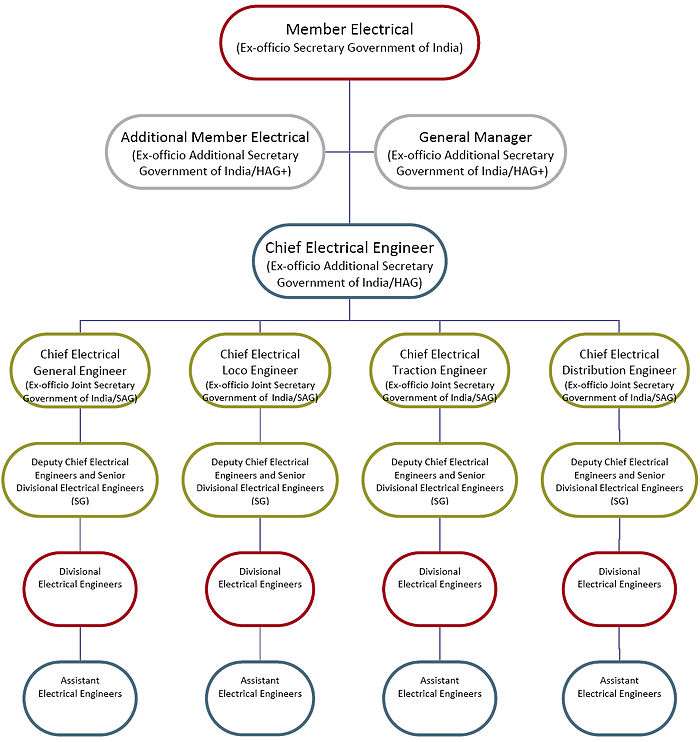Indian Railway Service of Electrical Engineers
The Indian Railway Service of Electrical Engineers (IRSEE) is one of the group A central service of the Indian railways. The officers of this service are responsible for managing the Electrical Engineering organisation of the Indian Railways.
The Indian railways have technical and non-technical departments for its operation and management which form the base structure on which the railways function. Technical departments include civil, electrical and mechanical engineering, signaling and telecom, and several others dealing with similar disciplines, control of operation and movement is done by traffic services(IRTS) while the non-technical departments include general services such as accounts, personnel management, Railway protection Force (RPF) or security, among others. Each department has staff at various levels. The highest are the Group A officers, while the lowest in rank are the Group D staff members.
IRSEE falls under the category of Group "A" officers.
Recruitment
The recruitment to the IRSEE cadre is done through the Indian Engineering Services Exam (ESE) ,conducted by the Union Public Service Commission (UPSC) of India. The UPSC is responsible for recruiting middle and top-level bureaucrats for the Government of India. The Present IRSEE Cadre Strength is around 2000 .
Role and function
The officers of this cadre are responsible to maintain the assets of the Electrical Department in Indian railways. Mainly divided in following branches General Service(G), Traction Operation(TrO), Traction distribution(TrD), Traction Rolling Stock(TRS). Traction Rolling Stock includes production and maintenance of Electric Locomotives, Electrical Multiple Units(EMUs) and Main Line EMUs(MEMUs). Traction Distribution includes the maintenance of substations(PS) and Over Head Equipments(OHE) involved in movement of Rolling Stock. These assets are monitored and controlled by SCADA system.
History
The IRSEE was created as an organised service after the nationalisation of the Indian Railways (1947–50). The Electrical Department was designated a minor department and was under the Mechanical Department (the major department) headed by Member (Mechanical) Railway Board. The Advisor (Electrical) reported to the Member (Mechanical) at the Railway Board.
In 1987, after the Fourth Pay Commission, the Railway Board was expanded and a Member (Electrical) created to look after the Electrical Department and the Signal & Telecommunications Department.
Organisation

The IRSEE is headed by a Member (Electrical) in the Railway Board (Ministry of Railways). Member (Electrical) is better known by the acronym ML. In each of the zones the organisation is headed by a Chief Electrical Engineer . The CEE reports to the General Manager of the Railway. The office of the Member (Electrical) of the Railway Board guides the CEE on technical matters and policy.
At the divisional level the Sr Divisional Electrical Engineers (General, Traction Operation, Traction Distribution, Electrical Loco Shed) head the organisation. The Sr DEE reports to the Divisional Railway Manager of the Division. Technical supervision is provided by the zonal Chief Electrical Engineer.
The probationers of IRSEE cadre are trained at IRIEEN (Indian Railways Institute of Electrical Engineering Nasik, Maharashtra. Names and phone numbers of IRSEE Central Railway Officers are available here IRSEE CR
References
Indian Railway Institute of Electrical Engineering Nasik (IRIEEN)